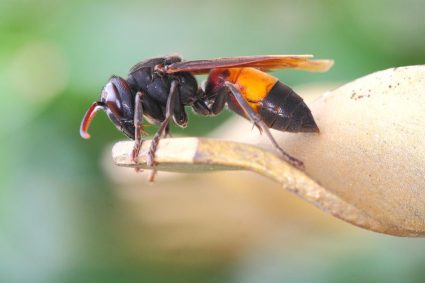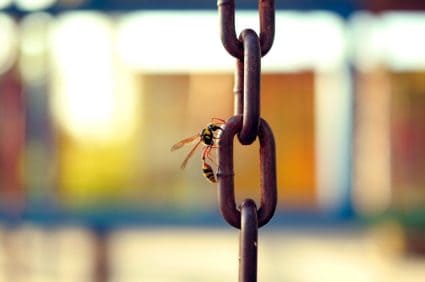
Planters add a touch of beauty to any space, but they can also attract unwanted guests. Animals, drawn by the delicious scents and textures of your plants, can wreak havoc on your carefully cultivated planters. However, with the right strategies, you can keep animals out of your planters without causing them harm. This article will guide you through several effective methods, from physical barriers to natural repellents, to protect your planters from animal invasion.
To keep animals out of planters, you can use physical barriers like wire cloches, chicken wire, or garden fencing. Natural deterrents like garlic, marigolds, citrus, coffee grounds, and peppermint can also help. Elevated planters and unpleasant surfaces can deter smaller animals. Commercial repellents are also available. Choosing plants that are less appealing to animals can also be effective. Remember to maintain balance and ensure the animals are not harmed.
Common Animals That Invade Planters
Animals such as deer, rabbits, voles, raccoons, squirrels, chipmunks, and groundhogs are often drawn to planters. They can eat entire plants or nibble on leaves and stems, dig up roots, or trample plants, causing significant damage.
Signs of Animal Damage
Common signs of animal damage include missing leaves on cleaned stems, clean, angled cuts on leaves, stripped bark and leaves off young trees, damage to flower bulbs, plant shoots, and leaves, uprooted plants, and dug-up roots. Regularly inspect your garden for signs of animal activity and take appropriate measures to address any issues.
Protecting Your Planters
Physical Barriers
One of the most effective ways to protect your planters is by using physical barriers. You can use wire cloches, chicken wire, or garden fencing to protect your plants from animals. For individual plants, you can wrap chicken wire around the plant to create a protective cover.
Natural Deterrents
Natural deterrents like garlic, marigolds, nasturtiums, citrus, coffee grounds, blood meal, and peppermint can keep animals away from your garden. These substances have strong smells that deter animals. Reapply these deterrents after rain or as needed.
Elevated Planters
Raising your plants off the ground can help keep animals away, especially smaller ones like rabbits. Elevated planters and window boxes can make it more difficult for animals to access plants.
Unpleasant Surfaces
Cover exposed soil in garden beds with materials that animals find uncomfortable to walk on, such as mulch, rocks, or chicken wire. This can deter animals from digging in your planters.
Store-Bought Repellents
There are several commercial repellents available, such as predator urine or granular animal repellents, specifically designed to keep certain animals away from your planters.
Less Appealing Plants
Choose plants that are less attractive to animals. Plants with pungent scents, fuzzy leaves, or prickly foliage are less likely to attract animals.
DIY Solutions
Homemade repellents, strategic plant selection, and natural deterrents are some of the DIY solutions to keep animals out of planters. Regular maintenance of your garden, including cleaning and removing any fallen seeds or debris, can also deter animals.
Maintaining Balance
While protecting your planters, it’s important to ensure that the animals are not harmed. Use natural and harmless alternatives to pesticides, install physical barriers, choose wildlife-friendly plants, provide alternative food sources, and practice sustainable gardening to maintain a safe environment for wildlife.
Products Available on the Market
Several products are available on the market specifically designed to keep animals out of planters. These include repellent sprays, plant protectors, pest fences, chicken wire cloches, elevated vegetable planters, and odor-based repellents.
Conclusion
Keeping animals out of planters requires a combination of strategies, from physical barriers and repellents to strategic planting. Remember that no method is foolproof, and you may need to combine several approaches to achieve the best results. With the right strategies, you can enjoy your beautiful planters without worrying about animal invasion.
In the end, remember that a little bit of planning and preventive measures can go a long way in ensuring that your planters and the animals that visit your garden coexist in harmony.
Frequently Asked Questions
What other plants act as natural deterrents?
Other than the ones mentioned, plants like lavender, rosemary, and thyme are also known to deter animals due to their strong scents.
Can I use any type of mulch for the unpleasant surfaces method?
Yes, you can use any type of mulch. However, coarse and sharp mulch like pine bark or straw might be more effective in deterring animals due to its texture.
How often should I reapply store-bought repellents?
The frequency of reapplication can vary depending on the specific product and the weather conditions. However, most manufacturers recommend reapplying every 30 days or after heavy rainfall.
What are some examples of less appealing plants?
Some examples of less appealing plants to animals include foxgloves, daffodils, marigolds, and plants with thorny or prickly foliage like roses or holly.
What are some examples of DIY homemade repellents?
Homemade repellents can be made using ingredients like hot pepper, garlic, and vinegar. For instance, a common DIY repellent is a mixture of water, dish soap, and hot pepper sauce.










